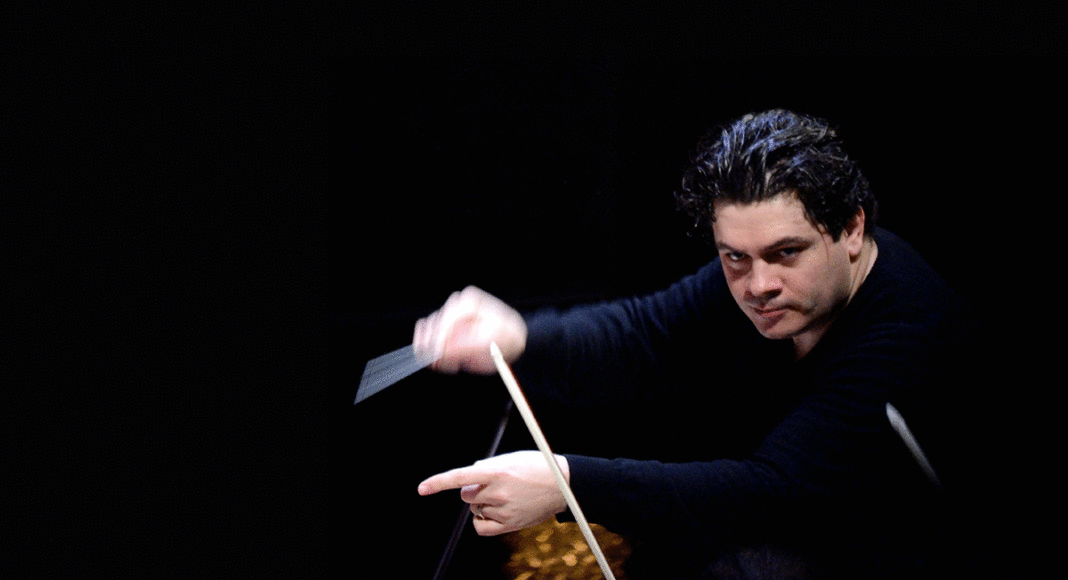EDITOR’S NOTE

We’ve written about the Cabrillo Festival of Contemporary Music many times over the years, and even examined how its tradition of presenting the U.S. and international premieres of new pieces has made it a magnet for world-class talent. But in this week’s cover story, Christina Waters takes a closer look at how the festival pulls off these premieres. Starting from Music Director and Conductor Cristi Măcelaru’s overall philosophy of programming, Waters then dives into the anatomy of a single piece that will get its West Coast premiere at this year’s festival, Impossible Things. Composer Nico Muhly explains the inspiration for the piece, while tenor Nicholas Phan explains how his longtime artistic kinship with Muhly affected his decision to make his Cabrillo Festival debut with the piece. Just understanding how these artists look at the interplay of voices and instruments reveals so much about what we hear when we’re sitting at the Santa Cruz Civic Auditorium, hearing the results of this intricate artistic collaboration.
I wrote about another artistic collaboration this week—the live and interactive installation Spektrum at Lille Aeske. While it was running up in Boulder Creek, it was hard to say too much about it without spoiling anything, but now that it’s ended I wanted to take the opportunity to talk in more detail about what was one of the most unique artistic projects I’ve ever experienced around here. Owners and collaborators James Mackessy and Sarah Farrell Mackessy say they may be bringing Spektrum back in some form (and producing more projects) in 2019, so if you didn’t get to go this time around, take a look at what they did—it was pretty remarkable.
STEVE PALOPOLI | EDITOR-IN-CHIEF
LETTERS TO THE EDITOR
Read the latest letters to the editor here.
More Knowns and Unknowns
Re: “More to Learn on Rail Trail’s Future” (GT, 6/22): There are no “unknown unknowns” in my opinion, but good start to an article to get people thinking. What is known is there are two options which have support, “rail + trail” and “trail only.” Yes, there are some outside ideas, but none of these will take hold. Personal Rapid Transit, PRT, could also be built near or on the highway. Let’s not forget self-driving cars may become a reality. PRT can be put on monorail, so that could be built with “trail only.”
The other thing that is known is that the RTC and the state are in the driver seat as far as making decisions on this issue, and there is a powerful pro-rail lobby now, similar to the days of the Old West promoting High Speed Rail, HSR, and dreaming these smaller lines connecting to it. They knew they would have to campaign to attract the large “no widen” crowd and the bike enthusiasts by promising a parallel bike path. This path is a known unknown, as it can be built and is expensive, but unknown to what exactly it will look like. So, they created fantasy artist renditions, claiming there was plenty of room and you can have an equivalent bike path as “Trail Only” for just $127 million. The Land Trust and Bike Santa Cruz were onboard, and we have a path to convince the public without them really thinking of the consequences. Perhaps HSR makes sense, but this does not.
Every local area is unique, and locals deserve to vote on it. Big Creek Lumber, Del Mar Foods and Lineage Logistics have known unknowns, and that is the estimated number of train cars vs. trucks loaded, destinations to and from, and projected cost. It appears this freight service is valuable around Watsonville, and could stay in operation with “Trail Only” built to the north. But when computing this into the better overall economy, don’t forgot the train will have to be subsidized to run, and the exorbitant amount of time and money spent in clogged traffic on the highway and major side streets.
What really blows the economic argument out of the water is that the corridor is a priceless area for the installation of underground utilities. High-pressure recycled water mains, distributing 10 MGD, cannot be placed next to train tracks. Then there is the argument of the poor families in Watsonville needing to commute to Santa Cruz. Can’t we help create more higher-paying jobs in Watsonville, and serve these people better with the widened highway and improved buses, including possible electric buses on the bike path?
Bottom line, you need to look at the whole picture, so when the signature takers walk around to simply put this on the ballot, please sign. Dream of what you prefer. It’s easy to envision “Trail Only” over the tracks, that’s a known known—not only what it would look like, but the cost. Don’t be fooled that “Rail + Trail” is also a known known, but ask yourself if you will use the train, go down to the train station, use it frequently to connect to HSR or other places. Envisioning the unknown parallel trail is difficult, and can be done by hiking on the tracks and envisioning building a road. Bring a measuring tape.
Bill Smallman
Felton
Re: Plan for Logos Building
Thanks for the informative article. One note: at the time of the ’89 quake, Logos was in the same location on Pacific, where it had been for years. That building was damaged in the quake, demolished, and replaced.
— Sam Baron
Sam is correct. My family has owned the current property since 1973. The old building was demolished after the 1989 earthquake. The new building opened in 1992.
— John Livingston
PHOTO CONTEST WINNER

Submit to ph****@*******es.sc. Include information (location, etc.) and your name. Photos may be cropped. Preferably, photos should be 4 inches by 4 inches and minimum 250dpi.
GOOD IDEA
Earlier this month, the Downtown Senior Center began a new partnership with Community Bridges’ Lift Line to expand services to local seniors. Lift Line has begun providing door-to-door transportation services to the classes and activities held at the Downtown Senior Center, Monday-Saturday. Classes include gentle yoga, exercise, creative writing, memoir writing, poetry, line dancing, qi gong, tai chi, Latin dance and computer classes. To be eligible, applicants must be 60 years of age or older and live in Santa Cruz County.
GOOD WORK
Six Santa Cruz poets traveled to New Mexico last weekend to compete in the 2018 Southwest Shootout Slam Poetry Championships against teams from across the southwestern states. They won first place in both the team and individual divisions. Slam poetry, a competitive spoken-word art form, gives poets three minutes to perform a piece of original work. Coached by Kevin Holmes and Jasmine Schlafke, the team of local poets includes Mycah Miller, Risa Mykland, Raggedy Andey, Fortino Vazquez-Hernandez Jr., Zoe Willats, and Jordan Wilson.
QUOTE OF THE WEEK
“Good conductors know when to let an orchestra lead itself.”
-Joshua Bell













